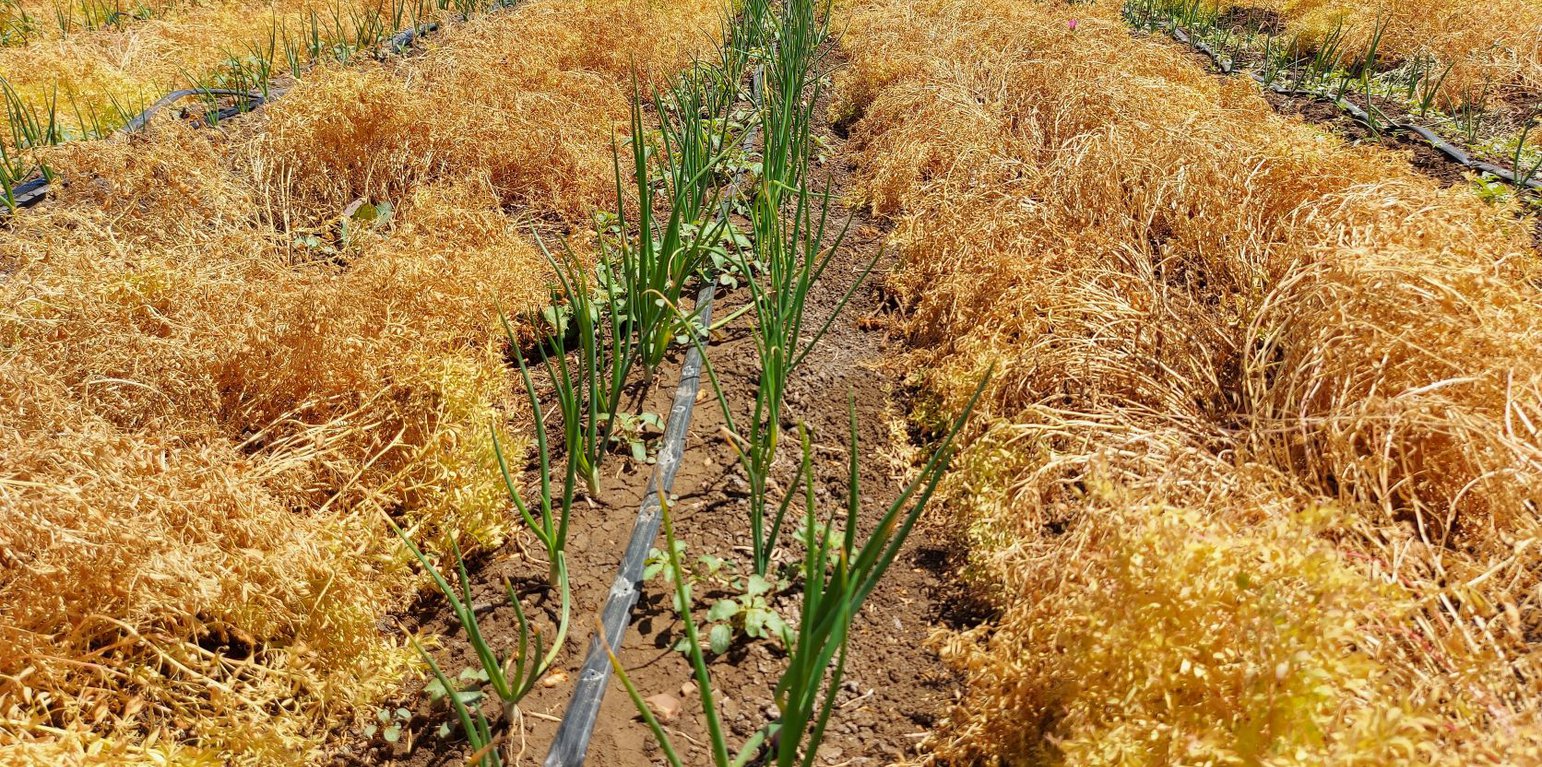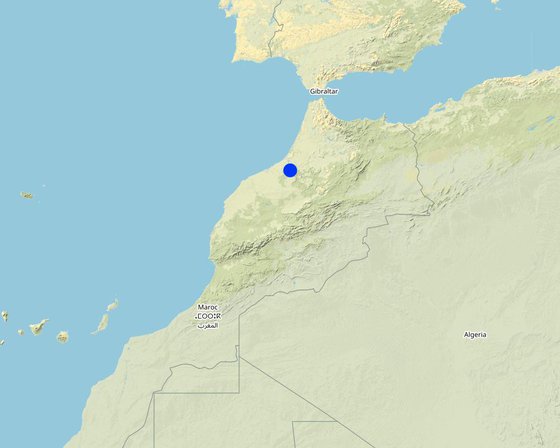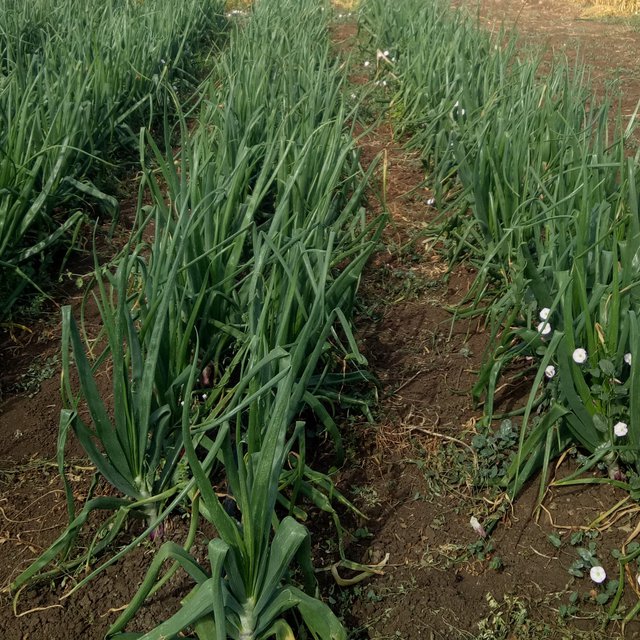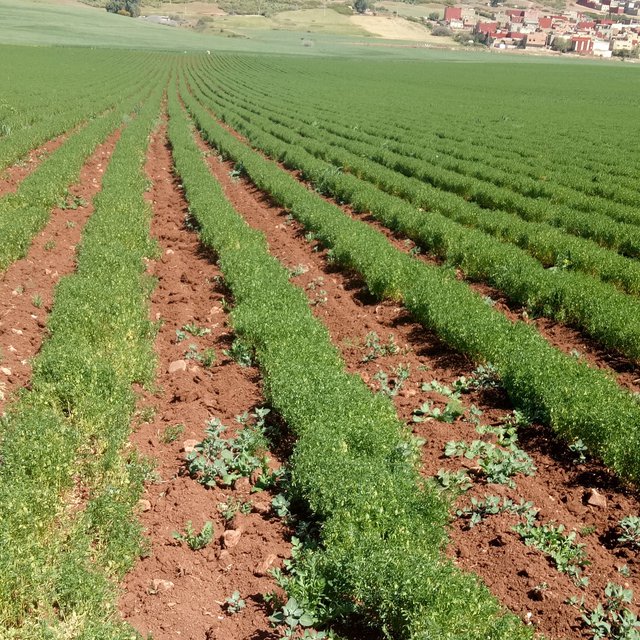



In the semi-arid regions of Morocco agricultural production is increasingly unstable as consequence of changing climate, variable rainfall and more frequent extreme weather events. There is a need, where possible, to intensify agricultural systems while improving food security - and increasing the resilience of the overall system.
Cultivating lentils in cereal-based systems is common practice in rural Morocco. To intensify this cropping system, taking into account the effects of climate change, the International Centre for Agricultural Research Dry Areas (ICARDA) introduced onions into the common lentil production system. This was a part of research trials to find suitability and economic profitability of crop rotation systems. The introduction of onions as a relay intercrop within lentils has multiple benefits and advantages. Firstly, with two crops are harvested from the same piece of land, thus overall farm profit increases. Secondly, the cultivation of two crops creates a more resilient overall system because the farmer is not dependent on one single crop. Thirdly, as onions are harvested later than lentils, the soil is covered for a longer period, consequently protecting it from degradation, hence soil quality is improved. Fourthly, lentils are leguminous, fixing nitrogen in the soil, thus improving soil fertility. Lastly, the market linkage for onions is very good in Morocco because it is a commonly cultivated crop with high cultural and culinary value: indeed, onions are a cash crop.
However, the technology has potential drawbacks. Firstly, onions require supplementary irrigation if there is not enough late season rainfall. Highly efficient irrigation systems (e.g. drip) require initial investment. In this case the Moroccan government supports 80% of the investment cost for installing drip irrigation. This establishment activity is thus a one-time cost. Secondly, if planted in small plots there may be risks of free grazing livestock as well as pest and insect infestations. This can be overcome by community farming and pest control.
In 2020 and 2021, ICARDA tested this Diversified Cropping System on a trial field of half a hectare, in an area with average annual precipitation of 400 mm. DCS is implemented in the following order of activities. The field is prepared by ploughing. In December, lentils are mechanically seeded. Two rows of lentils are planted 15 cm apart. The spacing between each two-row pair is roughly 95 cm. Compound fertilizer is applied during the seeding. In January, a single spray of herbicide is applied to control grassy weeds. The field is mechanically weeded twice, in mid-January and then again in February.
Onion seedlings are raised in January. These are then transplanted in March: also in paired lines (two rows at 20 cm apart). Compound fertilizer is applied before transplanting. Each pair-row of onion seedlings is planted between two pair-rows of lentils. Because the onions are planted within an already growing crop of lentils, this form of intercropping is termed "relay planting".
The onions are manually weeded in March-April. In April, the lentils are manually harvested and mechanically threshed. Finally, in June, the onions are manually harvested.
During a period from March until May, the onions are irrigated three times. Because the irrigation is just partial, it is termed "supplementary irrigation". The average irrigation amount per event was 15 millimetres. This is done through drip irrigation.

ສະຖານທີ່: Merchouch, ມໍລອກໂກ
ຈໍານວນ ພື້ນທີ່ ທີ່ໃຊ້ ເຕັກໂນໂລຢີ ທີ່ໄດ້ວິເຄາະ: ພື້ນທີ່ດຽວ
ການແຜ່ກະຈາຍຂອງເຕັກໂນໂລຢີ: ແຜ່ຂະຫຍາຍຢ່າງໄວວາໃນພື້ນທີ່ (approx. < 0.1 ກິໂລແມັດ2 (10 ເຮັກຕາ))
ຢູ່ໃນເຂດປ່າສະຫງວນທີ່ບໍ?: ບໍ່ແມ່ນ
ວັນທີຂອງການປະຕິບັດ: 2020
ປະເພດຂອງການນໍາສະເໜີ








| ລະບຸ ປັດໃຈ ນໍາເຂົ້າ ໃນການຜະລີດ | ຫົວໜ່ວຍ | ປະລິມານ | ຕົ້ນທຶນ ຕໍ່ຫົວໜ່ວຍ (MDH) | ຕົ້ນທຶນທັງໝົດ ຂອງປັດໃຈຂາເຂົ້າ ໃນການຜະລິດ (MDH) | % ຂອງຕົ້ນທຶນທັງໝົດ ທີ່ຜູ້ນໍາໃຊ້ທີ່ດິນ ໃຊ້ຈ່າຍເອງ |
| ອື່ນໆ | |||||
| Total Cost for Drip Irrigation | Total | 1.0 | 40000.0 | 40000.0 | 20.0 |
| ຕົ້ນທຶນທັງໝົດ ໃນການຈັດຕັ້ງປະຕິບັດ ເຕັກໂນໂລຢີ | 40'000.0 | ||||
| ຄ່າໃຊ້ຈ່າຍທັງໝົດ ສຳລັບການສ້າງຕັ້ງເຕັກໂນໂລຢີ ເປັນສະກຸນເງີນໂດລາ | 4'484.3 | ||||
| ລະບຸ ປັດໃຈ ນໍາເຂົ້າ ໃນການຜະລີດ | ຫົວໜ່ວຍ | ປະລິມານ | ຕົ້ນທຶນ ຕໍ່ຫົວໜ່ວຍ (MDH) | ຕົ້ນທຶນທັງໝົດ ຂອງປັດໃຈຂາເຂົ້າ ໃນການຜະລິດ (MDH) | % ຂອງຕົ້ນທຶນທັງໝົດ ທີ່ຜູ້ນໍາໃຊ້ທີ່ດິນ ໃຊ້ຈ່າຍເອງ |
| ແຮງງານ | |||||
| Onion Seedling Planting | Person-Days | 15.0 | 75.0 | 1125.0 | 100.0 |
| Onion Seedling raising | Person-Days | 20.0 | 75.0 | 1500.0 | 100.0 |
| Weeding | Person-Days | 30.0 | 75.0 | 2250.0 | 100.0 |
| Harvesting | Person-Days | 20.0 | 75.0 | 1500.0 | 100.0 |
| ອຸປະກອນ | |||||
| Lentil Seeding | Machine-Hours | 1.0 | 150.0 | 150.0 | 100.0 |
| Lentil Weeding | Machine-Hours | 2.0 | 100.0 | 200.0 | 100.0 |
| Threshing of Lentils | Machine-Hours | 2.0 | 150.0 | 300.0 | 100.0 |
| Herbicide Application | Machine-Hours | 1.0 | 60.0 | 60.0 | 100.0 |
| Fungicide Application | Machine-Hours | 1.0 | 60.0 | 60.0 | 100.0 |
| ວັດສະດຸໃນການປູກ | |||||
| Lentil Seeds | Kilogram | 45.0 | 8.0 | 360.0 | 100.0 |
| Onion Seeds | Kilogram | 4.0 | 600.0 | 2400.0 | 100.0 |
| ຝຸ່ນ ແລະ ຢາຊີວະພາບ | |||||
| Fertilizer (NPK 10-20-20) for Lentil | Kilogram | 100.0 | 3.0 | 300.0 | 100.0 |
| Fertilizer (NPK 10-20-20) for Onion | Kilogram | 100.0 | 3.0 | 300.0 | 100.0 |
| Herbicide for Lentils | Liter | 0.5 | 100.0 | 50.0 | 100.0 |
| Fungicide for Lentils | Liter | 0.5 | 150.0 | 75.0 | 100.0 |
| ອື່ນໆ | |||||
| Irrigation Costs | Per Event | 3.0 | 200.0 | 600.0 | 100.0 |
| ຕົ້ນທຶນທັງໝົດ ທີ່ໃຊ້ໃນການບໍາລຸງຮັກສາ ເຕັກໂນໂລຢີ | 11'230.0 | ||||
| ຄ່າໃຊ້ຈ່າຍທັງໝົດ ສຳລັບການບົວລະບັດຮກສາເຕັກໂນໂລຢີ ເປັນສະກຸນເງີນໂດລາ | 1'258.97 | ||||